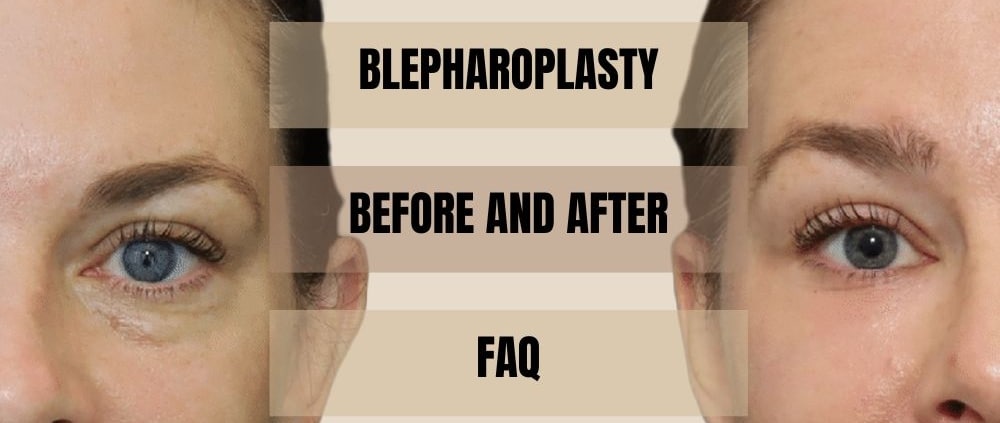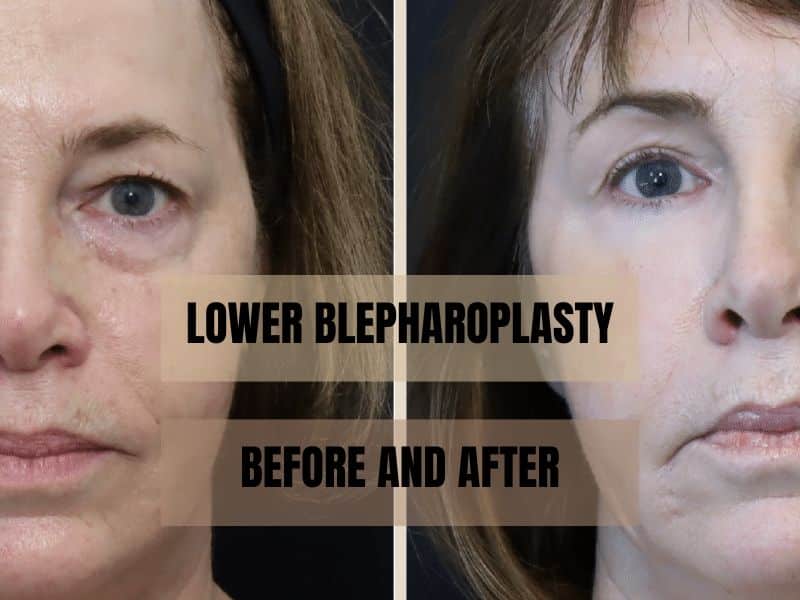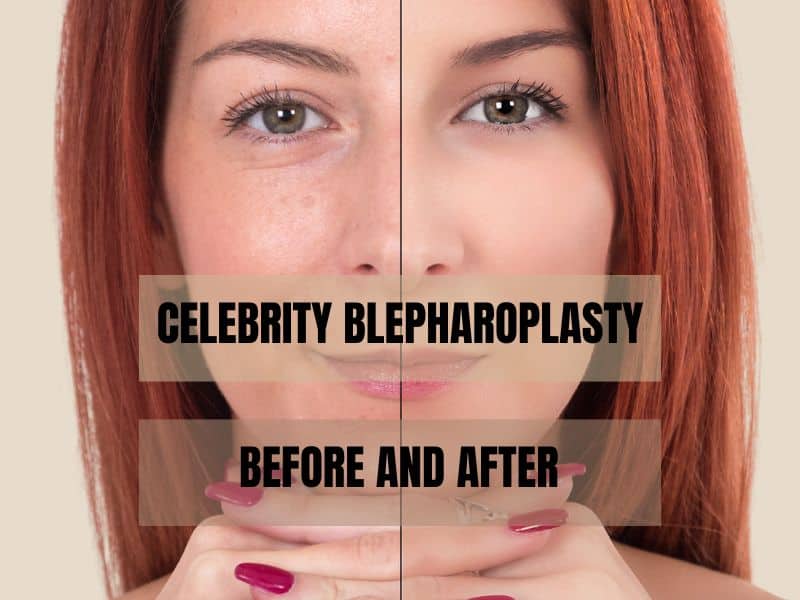Blepharoplasty Before and After FAQs
When you decide to undergo blepharoplasty before and after the surgery, it’s common to be somewhat nervous. Patients are frequently wary beforehand — concerned about undergoing the surgery itself. But it’s equally common to be nervous about the eyelid surgery recovery period following your procedure.
Below, we’ve listed some frequently asked questions about this procedure and what you can expect before and after your surgical experience.
Before Blepharoplasty FAQs
1. Am I a good candidate for blepharoplasty?
Ideal candidates are individuals with droopy eyelids, excess skin, or lower eyelid bags beneath their eyes. Candidates should also be in good overall health and have realistic expectations about plastic surgery in general. In certain cases, patients will need further testing to ensure they are good candidates.
2. What should I do to prepare for blepharoplasty?
Preparation generally includes avoiding certain medications like blood thinners, arranging for someone to drive you home after your procedure, and following other specific pre-operative instructions provided by your plastic surgeon.
3. How should I choose a surgeon for blepharoplasty?
Look for a board certified plastic surgeon with experience in this procedure. Review their before and after photos closely, and read past patient testimonials. Finally, schedule a consultation to discuss your ultimate goals.
4. What can I expect during my consultation?
During your consultation, your surgeon will assess your eyelid condition, discuss your goals, and determine if you’re a good candidate. They will also explain the procedure, the side effects and risks, and the typical recovery process.
5. Will my surgery leave visible blepharoplasty scars?
Blepharoplasty scars should be minimal since incisions are typically made within the natural creases of the eyelids or inside the lower eyelid. Over time, scars will fade and ultimately, should become nearly invisible.
6. How long does a blepharoplasty procedure take?
Double eyelid surgery generally takes about one to three hours, depending on whether you’re having upper eyelid surgery, lower eyelid surgery, or both procedures.
7. Are there risks associated with blepharoplasty?
As with any surgery, there are risks, including infection, bleeding, dry eyes, and asymmetrical or poor results (bad scarring). Your surgeon will discuss these risks with you before your procedure.
8. Can blepharoplasty be combined with other procedures?
Yes, blepharoplasty is often combined with other facial procedures, such as a facelift or brow lift surgery.
9. What is the cost of eyelid surgery?
Eyelid surgery cost varies depending on the surgeon, location, and extent of surgery. It’s important to discuss all fees at your consultation. We cannot provide cost estimates here.
After Blepharoplasty FAQs
1. What will my eyelids look like immediately after surgery?
Expect swelling, bruising, and some redness around the incision sites. These effects are temporary and typically subside within a few weeks.
2. How should I care for my eyes post-surgery?
Follow your surgeon’s aftercare instructions, which may include applying cold compresses, keeping your head elevated, and using prescribed eye drops or ointments.
3. How long is the recovery period after blepharoplasty?
Most patients return to normal activities within one to two weeks, but it may be longer before you can do things like exercise.
4. Will I need follow-up appointments after blepharoplasty?
Follow-up visits are essential to monitor your healing process following surgery. Your surgeon will schedule these appointments at intervals to ensure your recovery is on track.
5. Will my blepharoplasty results be permanent?
Blepharoplasty offers long-lasting results, but it doesn’t stop the aging process. Over time, the effects of gravity and aging may cause additional changes. For now, you can expect your results to last at least a few years.
6. What if I’m not satisfied with my results?
If you have concerns about your results, discuss them with your surgeon. In some cases, a revision surgery may be considered to achieve your desired outcome, or you may decide to look elsewhere for a revision.
7. Can I wear makeup after blepharoplasty?
You can typically resume wearing makeup about two to four weeks following surgery. You must wait until the incisions have healed and your surgeon gives the go-ahead.
8. Will blepharoplasty improve my vision?
If your droopy eyelids were obstructing your vision, blepharoplasty could improve your eyesight. However, many people seek this procedure for cosmetic purposes alone.
FAQ: Eyelid Surgery Blepharoplasty
Have any celebrities undergone blepharoplasty?
You’ll certainly be able to find some celebrity blepharoplasty before and after photos online. Unfortunately, most celebs aren’t upfront with their plastic surgery experiences, so it’s not common to find stars who will openly admit to this surgery.
What’s the difference between bilateral lower blepharoplasty and an upper blepharoplasty procedure?
Upper eyelid blepharoplasty improves the appearance and function of the upper eyelids. Many patients struggle with vision impairment because of sagging upper eyelids. Likewise, drooping upper eyelids can cause patients to have a tired appearance and look older and less alert. Bilateral upper lid blepharoplasty (bilateral upper blepharoplasty) can improve the upper eyelids by removing excess upper eyelid skin (upper lid skin) and fat and tightening the surrounding eye muscles.
On the other hand, bilateral lower lid blepharoplasty (lower eyelid blepharoplasty) primarily improves the function and appearance of the lower eyelids. For the most part, lower blepharoplasty helps to eliminate or improve under eye bags and reduce sagging of the lower lid by getting rid of redundant skin and excess fat and tightening the surrounding muscles.
To see examples of each surgery, we recommend looking up upper blepharoplasty before and after photos and lower blepharoplasty before and after photos online.
Request a Consultation Appointment with Dr. Sieber
Board-certified plastic surgeon Dr. David Sieber performs upper and lower blepharoplasty procedures for patients at his San Francisco practice. Eyelid surgery can completely transform your appearance while still maintaining a natural look. It’s also a wonderful procedure for helping to improve your vision if vision impairment has been a problem due to droopy upper eyelids.
Please contact us at your earliest convenience to set up your first one-on-one consultation appointment with Dr. Sieber.






